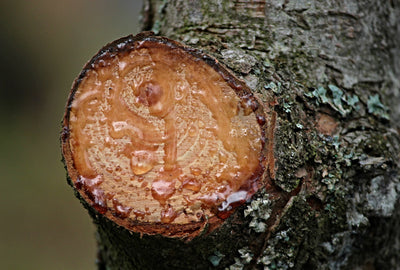Felz has a long tradition in human history as a material for various applications. The processing of this material can be traced back to the Stone Age. Today, the applications range from the production of clothes to instrument building to use of the felt as a seal. Laser cutting offers a particularly precise and fast manufacturing of felt cuts as well as engravings.
Overview: What is felt and what does it consist of?
The question "What is felt?" can be answered primarily by the method of manufacture and processing. Filz is a non-woven textile material. Felt consists of pressed fibres, which in turn can consist of either natural or plastic materials. The starting materials for felt materials include:
- Curves
- Other animal hair
- Cotton
- Coconut
- Hemp
- Polyacrylic
- Polyester
- Polyamide
The substance belongs to the group of fibrous substances. These are characterized by the fact that the fibers are connected to each other. In this they are different from fabrics where chains and shotguns are crossed in right angles.
In principle, it is possible to filter almost all natural or plastic fibers. Among the natural materials, the most common are curling wool and other animal hair, cotton, but also coconut or hemp. The best known synthetic substances used for filtration are poly acrylic, polyamide and polyester. Basically is the material used is not a definition criterion for felt the term refers more to the method of processing, i.e. filleting.
How is felt made?
In principle, the Manufacture to distinguish the methods of wet-scrubbing and dry-scrubbing. Wet fillings are also known as walk felting. It is a process in which the unbleached fleece is processed with hot water or steam as well as soap (as alkaline felt aid). This traditional practice is particularly used in the felling of sheep wool and other animal hair. The mixture of hot water and soap causes the scales of the top layer of the hair to stand up. If the material is rolled simultaneously, the fibers penetrate each other. This results in a strong contraction of the stacked sheds. As a result, they enter a unit that can no longer be dissolved. In this process, the filtered material shrinks significantly, resulting in a stable textile structure. The final shape can be easily and seamlessly worked out from one piece. Walk felt consists mostly of animal fibers, some of which are mixed with cellulose. It is therefore a biodegradable natural product.
An alternative is dry fillings, where the dry material is brought into a certain form using special fillet stamps. It is for drying fillings by some kind of preliminary method of destruction (with needles). The needle felt can be produced mechanically using several needles with retractors. The arrangement of the hooks corresponds approximately to the inverse arrangement of a harpoon. In this way, the fibers are pushed into the material so that the needle can be easily removed again. Repeated insertion of the needles causes the fibers to connect. After treatment, they can be treated with water vapor or chemically. Not only wool and other animal hair can be used in the manufacture of such needle flakes, but almost all synthetic materials can also be used. The method is also suitable for fibers without any sheath structure, such as polyester and polyamide. The typical today industrially manufactured felt material is produced in this way. Another method is to attach the fibers by means of a pulsed stream of water.
The fabric and sustainability: Is felt environmentally friendly?
The ecological aspects of felt as a material are directly related to the starting material. Compared to Cork There is therefore no very clear answer here, as several factors have to be taken into account. Traditionally, natural products come as wool or other animal hair used. It is a raw material that grows naturally. The end products are also biodegradable. Shearing is also safe for the animals, if properly carried out. In general, no polluting chemicals are used in the production process.

Before the Background to environmental protection, However, it should be borne in mind that livestock are emitting methane, which plays an important role as a greenhouse gas and contributes to climate change. It should also be borne in mind that larger areas need to be grubbed up for sheep farming.
In synthetic felt processing, Polyester and polyamide are mainly used. The production of these synthetic fibers requires a high energy cost (estimated approximately 30-kilowatt hours per kilogram). This is associated with high emissions (about 14 kilograms of carbon dioxide per kilogram of polyester).
Furthermore, the pollutant balance synthetic felt the production of potentially hazardous substances such as antimony, cobalt and sodium bromide.
Usage: Which products can be made from felt?
In, Felt is a versatile material with many applications. These range from fashion to craftsmanship to interior architecture. Felt is often used in the clothing industry. Here, for example, felt hats or felt trunks are made. Also, felt depths, bags and clothing are popular applications for felt in the fashion industry. As a decorative accessory, felt is also very popular. It is wonderful for your own Tablecloth use, e.g. in the form of BagsIn gas filtration, felt is used as a filter medium (often in the form of needle felt).

A further important use of the felt is the use as insulating material in engineering. For example, they can be used for noise abatement. Felt materials can also be used as seals. Thus, felt is used in roller bearings or in felt strips or fillet rings according to DIN 5419.
Felt continues to play a major role in instrument building In the production of pianos, felt is used in hammer mechanics as a damper for the hammers hitting the strings.
In vehicles, felt can also be used in the form of a felt cover. Since the certain felt suitable for polishing use is called a polish filter. Depending on the type and design of the felt, different materials such as glass, ceramics and metal can be polished. In the furniture industry, Material as a felt conductor.
Overview of the fabric and its material properties
The material properties of Files are directly related to the starting materials. The classic properties of wool are available in the case of fleece made of corrugated wool. These include good properties in thermoregulation. Wool is thus very well suited as a heat insulator, which is why felt enjoys a good reputation in the clothing industry. Sheep wool has the property of storing body heat very well and thus isolating it. The insulating properties of wool fur protect the body from both heat and cold. A further advantageous property of the felt is that it is largely dirt-repellent. Dirt is therefore not absorbed and does not enter the substance. In addition, the material is water-repellent, so that there is hardly any penetration of liquids. Felt continues to have color-resistant and antistatic properties. The material is also noise-reducing, which is why it is well suited as a dam material. It swallows the sound largely. Also, synthetic felt, or synthetic fiber film has many beneficial properties. It is a durable material. It is also largely freely shareable and light. In addition, synthetic felt is colorful, which makes it an attractive material in furniture construction.
In Fillets are also highly flammable materials, Wool fiber is typically non-flammable. Even in the case of direct fire, it is only at temperatures of about 320 degrees Celsius that the substance is cooled.
Felt processing with laser cutting: cuts and engravings

Felt materials are ideal for processing with the Laser. During laser cutting, the material is processed without contact. This has the advantage that the Felt is not crushed or bent Complex and costly cuts can also be made in this way.
In the process of laser cutting, a strong heating of the felt by the laser beam. The material is heated so strongly at the cutting point that the heat is immediately removed as smoke. This does not cause any damage to the surrounding material, which is not intended for processing. The result is a clean and precise cutting edge.
===product===
Mr-beam-sample-package-filz-box
===product===
filz-5er-set-neon
===product===
Felz-5er-set-light-grey
===product===
This makes laser cutting particularly suitable for the production of more elaborate cutting patterns. Laser cutting by Felt is also possible in combination with an engraving. The engraving can also be done independently of laser cutting. Laser engraving is a process in which material is removed from the felt surface. Because of the heating, the material is also sealed. In the context of Laser engraving of felt, there is a noticeable depression in the felt, which has a slightly darker hue than the original material. In the case of felt, it is recommended that: Laser the use of synthetic fibers. Wool fiber may have a stronger odor development during thermal processing, while the cutting edges may be cooled.

In general, laser cutting stands for a contactless and precise cut without slipping the felt. The resulting cutting edges are free of fibers and sealed. Different materials can be processed as quickly as accurately. The Mr Beam is capable of filleting with a Material thickness of up to six millimeters laser accurately. The fillet design is also possible with the user-friendly Mr Beam laser cutter.
You have the Guide to felt in our Material fallen? Then subscribe to our newsletter not to miss any more articles. We regularly publish new Tutorials and DIY-Inspiration on our Mr. Beam Blog..



